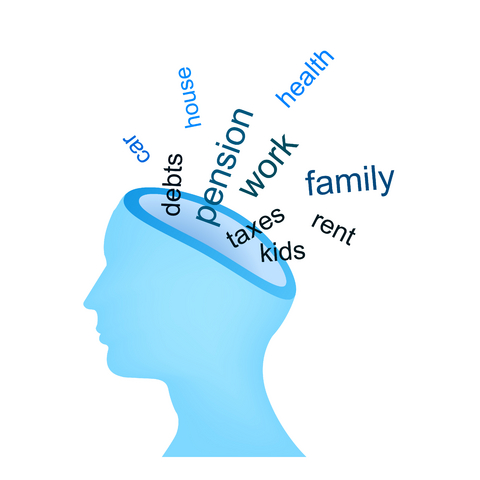We’ve discussed and shared a lot of different aspects of meditation and how to work with the mind on this site.
One topic that we haven’t strayed into is how working with one’s mind can not only affect the quality of one’s life and the lives of those around us, but also how the stability that we can find in learning to meditate can also help us when we or our loved ones approach the transition of life into death.
The Latin words memento mori—“remember death” or “remember that you must die”—were used in ancient Rome and in medieval times to remind the people of the imminence of death and the uncertainty as to its hour or circumstances. It was also believed to have been used in Rome during parades for Roman generals celebrating victories or triumphs in battle. Walking behind the victorious general would be his slave, who was given the task of reminding the general that, although he was celebrating his victory, at any moment he could be brought down by defeat. The slave would shout the words, “Memento mori!”
Remembering death, and being present with the end of life may be the ultimate test of the stability of one’s mind. Whether it’s the death of another or our own death, how our mind is during the process of dying is of utmost importance. If we’re attending to another’s death, then we owe it to that person to be present and to attend solely to their process. If we’re experiencing our own death and we haven’t worked with our own mind, the challenges that we face and the obstacles that prevent us from dying a good death may be many. Therefore, we owe it to ourselves to create stability and peace within our minds, if not for the sake of those who we care for who are dying, then for ourselves and our dying process.
Having witnessed thousands of deaths—good and bad, expected and unexpected—and having seen how the quality of mind at the time of death affects the dying process, I can imagine nothing of greater importance than learning to attend to our mind when we are in the presence of someone who is dying or when it is our time to die. How a person dies and the quality of presence and the presence of mind of a caretaker affect not only the individual who is dying but all those around the dying person, as well.
Mind is the forerunner of all experience, and I can think of no experience more demanding of a mind well trained in meditation and compassion than the experience of dying.
The time spent contemplating and studying impermanence prepares us to accept that the body dies. It’s just a natural consequence of being alive. While you are alive, it is important to learn how to live in such a way that you can be at ease with whatever happens. When dying, it’s important to learn how to die in a way that is not so burdened by anxiety, fear or pain—to learn how to die without dread.[i]
– Chokyi Nyima Rinpoche, from Medicine and Compassion—A Tibetan Lama’s Guidance for Caregivers
While the path from practicing meditation to practicing meditation on death may not appear clear, it is quite logical. After all, if we can’t learn to meditate under the duress of, say, an argument with a peer or loved one, how can we imagine practicing while attending to death of a peer or loved one?
Two different circumstances you say? Indeed, but what we tend to forget is the reminder of momento mori; death is certain and – for all we know – may be imminent? Since there are no guarantees that we won’t meet our demise…tomorrow(?!!), it may behoove us to begin practicing with our mind…today!!
Is this post a bummer? Is the subject of working with our mind around the topic of death unbecoming? Why? The historical Buddha wrote: “Of all the footprints, that of the elephant is supreme. Similarly, of all mindfulness meditation, that on death is supreme.” Think about this when you take this exercise into your practice.Why would meditating on death be supreme? How can the meditation on death bring us more in touch with our daily life?
Share your comments. Let me and others know what happens when you use this “supreme” method of meditation. And, as always, please feel free to contact me if you’d like to see additional content or other discussions on this site.
For more information on how to meditate, exercises in working with the breath, and other nifty stuff, please see the Related Posts below. Also, don’t forget to download the free ebook, Can Meditation Change the Way that You View Your World?, for help with getting started in you meditation practice.
[i] Rinpoche, Chokyi Nyima, Shlim, David R. Medicine and Compassion—A Tibetan Lama’s Guidance for Caregivers. Boston: Wisdom Publications, 2004, pg. 145.






[…] a post titled, Meditating With Death in Mind (memento mori!), I suggested that you take on the subject of death – yours or a loved one’s – as […]
I am 71 and dying . I think of death daily and see it as an adventure much the same as the very first time l flew to Europe. Like death l didn’t know what to expect comparing it to my home in the states, my only comparison. Death
Is the wholly other experience of life and no one knows what awaits us if anything . It’s exciting knowing the permanence of death yet wishing for an afterlife. That’s it that hope is what makes it a hardship. Without imagining something other death would be easier to accept. It’s my dearh so l try to understand it. . If l lose my body and my mind what is there?
Nothing is possible but l won’t know until l shut my lights off for the last time. Will it be beatific or just death? Will my self linger seeking answers in a deep dark valley?Or will l be enveloped by whir light . I don’t want to care butt l do.
RicMiller
Wow Ric –
Thanks so much for sharing your journey…the most important journey of your life!
Any other insights?
Do you have a contemplative practice that will help to support you in this transition?
Please do feel free to share more.
Take care,
Jerome